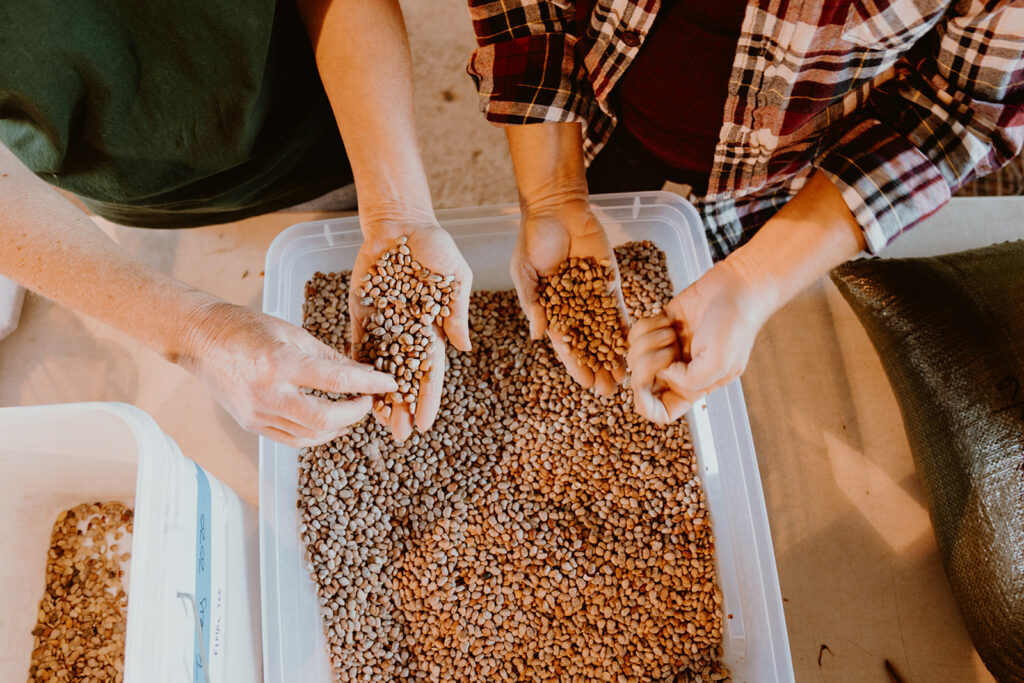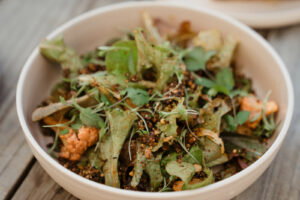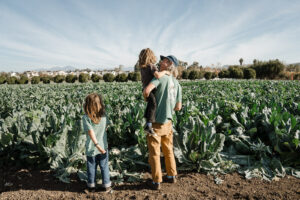In 2020, we grew four varieties of shelling beans at The Ecology Center: Black Beans, Cranberry Beans, Tepary Beans, and Mayocoba.
One of the great benefits of shelling beans, in addition to their ability to fix nitrogen in the soil, is that they can be harvested fresh or allowed to dry in their pods. This allows them to be stored as a year-round protein source. Because of our dry Southern-California summer, The Ecology Center leaves the majority of our beans in the field to dry. If we are eager to use their growing space, we can harvest the beans and then allow them to dry on tarps in the field.
Our beans are then processed in two different ways: by hand or with small scale machinery. Processing some with small scale machinery allows us to make them available in the farmstand as soon as possible and shrink their storage footprint, but hand processing remains critical to keep the beans coming as the year moves on.

For mechanical processing, we bring our beans to Mike Reeske’s farm, Rio Del Rey Heirloom Beans in Northern San Diego County. Mike Reeske is committed to preserving heirloom bean varieties and has become a close friend of the Ecology Center after he and Evan met several years ago through a mutual chef friend. It is from his seed that we started our Mayocoba and tepary crops. The tepary bean in particular thrives in the American southwest and has long been grown by indigenous peoples here. It is one of the most drought-tolerant crops in the world, able to grow with just a single rainstorm.
Mike runs our beans through his mobile grain thresher, a unique piece of small-scale equipment he found in Turkey where it is used for everything from sesame seeds to fava beans. Most large scale bean massive combines for threshing, which are not suited for small scale sustainable methods. The machine contains 44 teeth that separate the beans from the pods and other plant matter, most of which the machine sorts away. The beans do not emerge completely clean, however, and small plant debris, split seeds, and bits of hard clay soil can be mixed in. To sort this out, The Ecology Center Culinary team, Amber and (myself/Ryan) headed down to Mike’s farm to spend a Friday evening learning how to use a seed and grain cleaner. The machine agitates the beans and allows them to fall through a series of screens to clean the beans. After several hours of sorting and some time spent sampling some of Mike’s experimental pepper and bean varieties, we headed back to The Ecology Center with 600 lbs of beans.
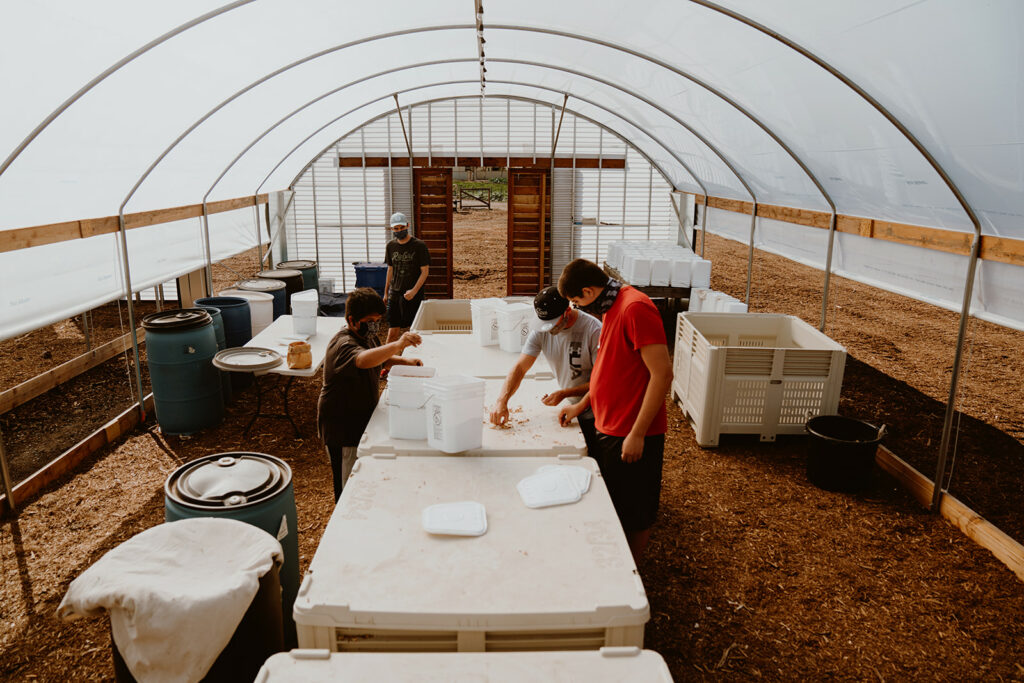
Our hand-sorted beans are shelled in our hoop house. We open up the greenhouse walls to offer a view of the farm and volunteers get to work! Tons of participants from all walks of life help us shell our beans. It’s a great task for families and little ones, corporate groups giving back and getting out of the office for the day, and a variety of our other community members. We normally have a shift a day, open to anyone who wants to RSVP!
We have been especially proud to partner with the Capistrano Unified School District and their Adult Transition Program. The mission of the Adult Transition Program is to help students ages 18 through 22 with developmental disabilities participate in the community and get real-world skills that will help them in society. We have been so fortunate to have so many classrooms come through and help us with this endless and rewarding task. Everyone who lends a hand has a deeper understanding of where our food comes from and just how much work goes into the land and our plates!
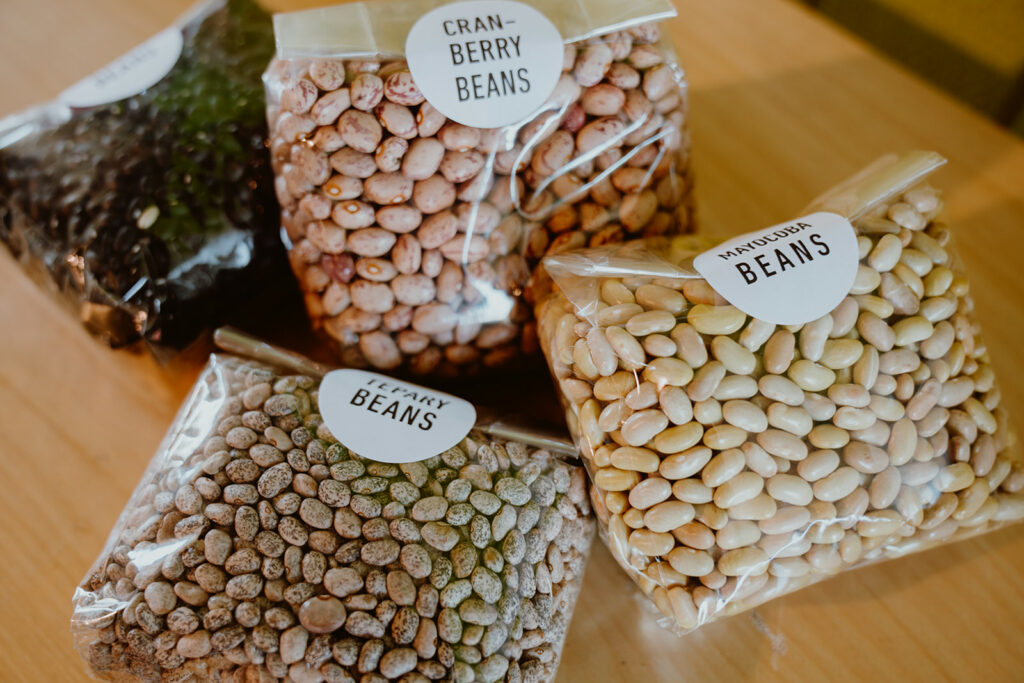
The sorted beans are then bagged up by volunteers, labeled, and placed on the Farm Stand shelves!
A lot of work and community support goes into the special staple crop of every pantry.


